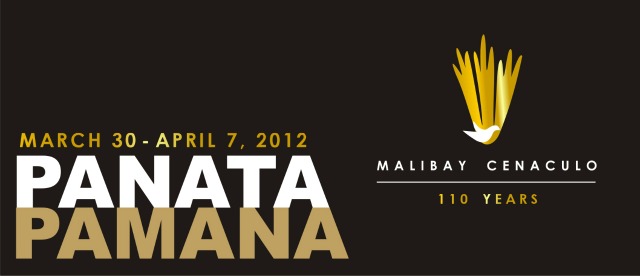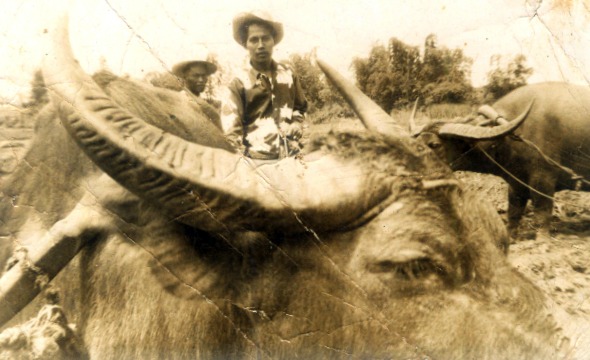Filtered By: Lifestyle
Lifestyle
110 years of the Malibay 'cenaculo': Pasay's living heritage
BY REN AGUILA
Most Metro Manila commuters know the district of Malibay in Pasay City as a place name appearing on bus and jeepney signs. It is the area to one's right as one heads toward Makati from the SM Mall of Asia.
Little do they know that Malibay hosts a tradition that has been going on for exactly 110 years.
The Malibay cenaculo, or Passion play, is said to be the oldest continuing play of its sort in the Philippines―a distinction recognized by the National Commission for Culture and the Arts. This year, it celebrates its 110th anniversary, and the play opened on the night of Saturday, March 31.

This year's cenaculo is entitled "Panata Pamana."
The verified antiquity of the Malibay cenaculo was the result of patient and painstaking research by Edgar Granada of the Pasay City Tourism Council.
He recently gave the results of his research in a presentation at the Metropolitan Museum of Manila, in conjunction with two shows. One is an ongoing photo exhibit on Pasay City held in cooperation with the De La Salle-College of St. Benilde and the Instituto Cervantes. Another is an exhibit of religious icons from the collections of the Met and the Presidential Commission on Good Government that runs until April 14. Malibay is dedicated to San Juan Nepomuceno, and an icon of the saint is in the Met's collection.
Granada is also the son of the current director (and third-generation sinakulista) and was the only one in the family who did not leave for the US, much to the father's chagrin. Granada's father joined the Malibay passion play at the age of 17, and at 83 is still very much around. His own son's contribution, though, was to retrieve the heritage of the Malibay cenaculo.
It all started with a faded sepia photograph.
Retrieving the heritage of the Malibay cenaculo began with this faded photograph.
The photo, taken apparently at the Ecce Homo (Jn. 19:5), shows several actors in soldiers' costumes pointing to an actor playing Jesus.
Granada said that the photo was taken in front of the chapel of Malibay, the Visita. (This was the chapel which priests from the parish church would visit, hence the name.) The text on the photograph gave away the age of the photo―the year the Philippine-American War ended.
Granada's grandfather, Dionisio Geronimo, was one of the so-called “tres caidas” who were responsible for founding the cenaculo. “Sila 'yung magaling magbasa ng Pasyon," he remarked.
8 days' staging
The Malibay cenaculo (derived from the Spanish and Latin terms for the cenacle, the room where the Last Supper was held) is based on Filipino poet Gaspar Aquino de Belen's "Ang Mahal na Pasyon ni Jesu Cristong Panginoon Natin na Tola," commonly called the Pasyon, along with other related texts.
It closely follows the outlines of the Pasyon, whose poetic narrative covers highlights of the Christian history of salvation from the Creation to the extra-biblical account of the coronation of Mary as Queen of Heaven, familiar to Catholics as a mystery in the Rosary.
Hence, the play is staged over eight days, mainly in the evenings. One exception is on Good Friday, where the scenes of the passion and death of Jesus are staged at noon, with the procession to Golgotha, the cenaculo's highlight, going through the streets of Malibay. (Incidentally, Granada recommends visiting Malibay on Good Friday for this and for the procession of penitents that takes place earlier in the morning.)

The original script for the Passion play, along with a thurible and a chalice used in the cenaculo.
Over the years, the script, as well as the staging, has been modified. “In the beginning, the play was performed on the ground,” Granada recalled, “and there was no stage or backdrop yet.” A century hence, they gained a stage, cloth backdrops, and better costumes.
One favorite comparison Granada makes is of the costumes of Roman soldiers then and now. “Dati, 'yung mga costumes nila, kamukha ng suot ni Magellan," he said, showing more recent photos where the costumes evoked more the flavor of say, the Hollywood epics "Spartacus" or "Ben-Hur."
Ecce Homo, one hundred years later. Photo from the Edgar Granada collection
Asked if his father, the current director of the cenaculo, has a successor already, Granada said while he was already very familiar with it, he felt that he would not be able to take it on for certain reasons.
But he was quick to point out one thing about the cenaculo. “Halos lahat ng gumaganap, panata nila iyon,” he said. All the actors took this on as a religious exercise, and Granada said that participants' lives were changed―even future spouses met while working on the play. (Of course, someone else pays for feeding the actors during rehearsals.)
At this point, a comparison can be made with one of the world's most famous passion plays, which follows the same outline as this one. The town of Oberammagau in Germany has had a decennial Passion play, and it is as much a religious act as much as it is a performance.
Here, one can speak of art with a purpose. Far from being an expression of self, it is the expression of shared beliefs and values. Those values and beliefs, Granada fears, are being lost by the current generation, and for him this is one of the things that have changed.
Malibay indeed has changed over the years. When the cenaculo started, the town was the only inhabited settlement in what is now Pasay. It was primarily an agrarian settlement and was, during the Revolution, a hub of Katipunan activity. Granada showed a picture of his father mounted on a carabao, and many of the roads were used as cattle paths.

A scene from rural Malibay, showing Edgar Granada's father. Photo from the Edgar Granada collection
The Malibay cenaculo's value is now, apart from its celebration of a town's heritage of faith, a celebration of a time long past and a reminder that even a city like Pasay with high-end hotels and entertainment venues has its roots in the soil and the struggle for freedom. — KG, GMA News
More Videos
Most Popular



